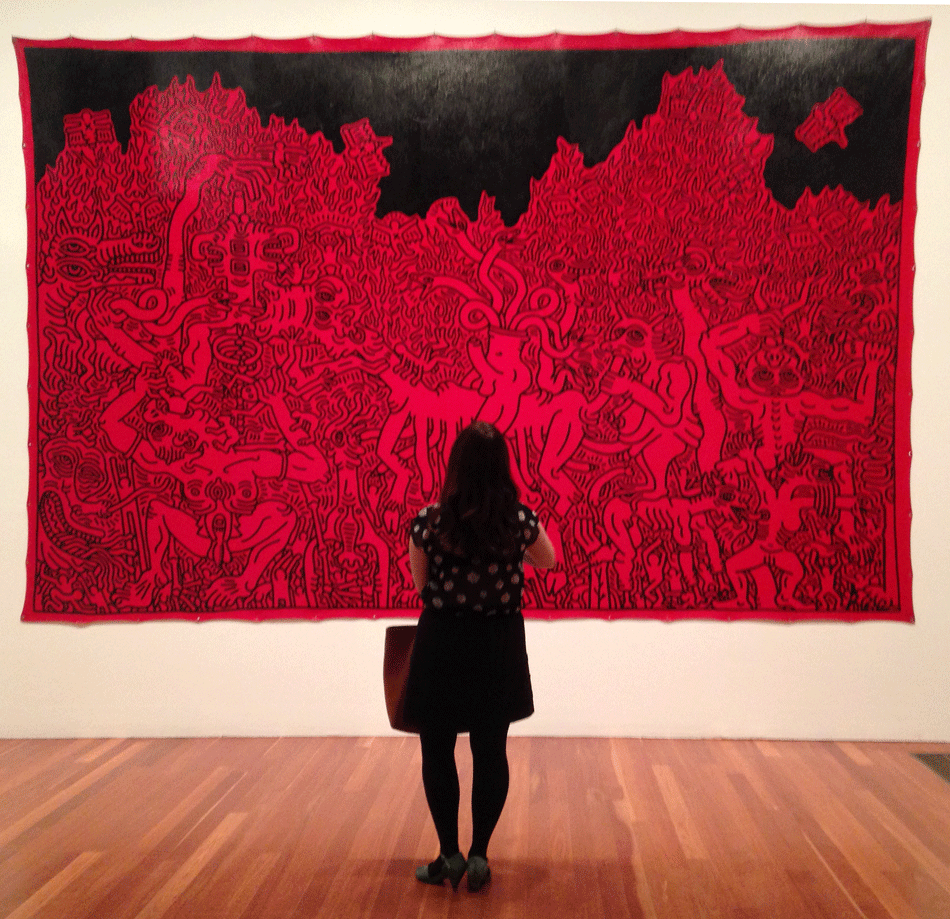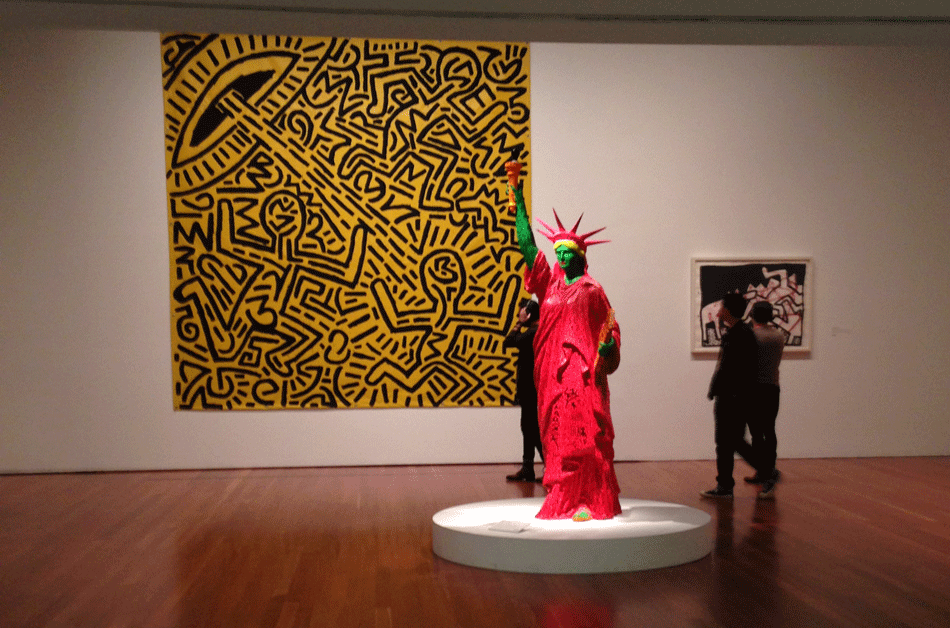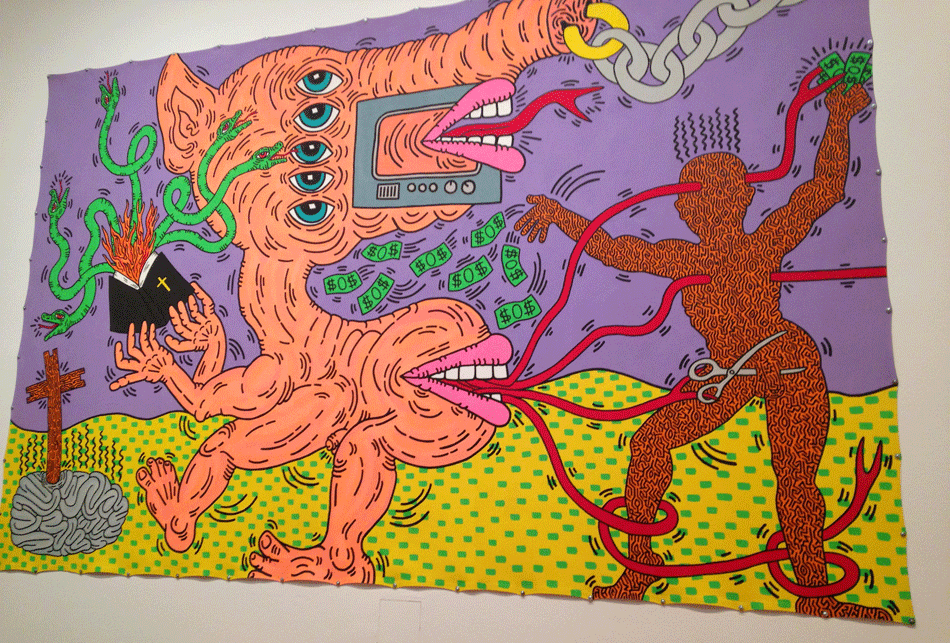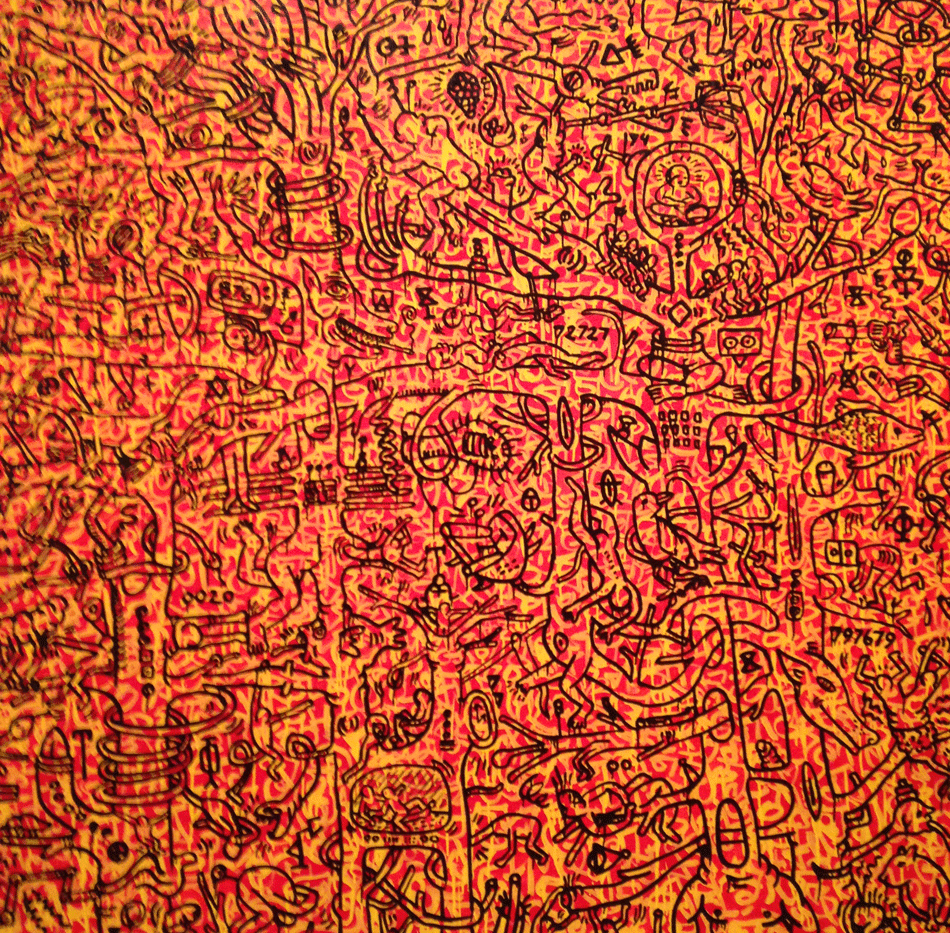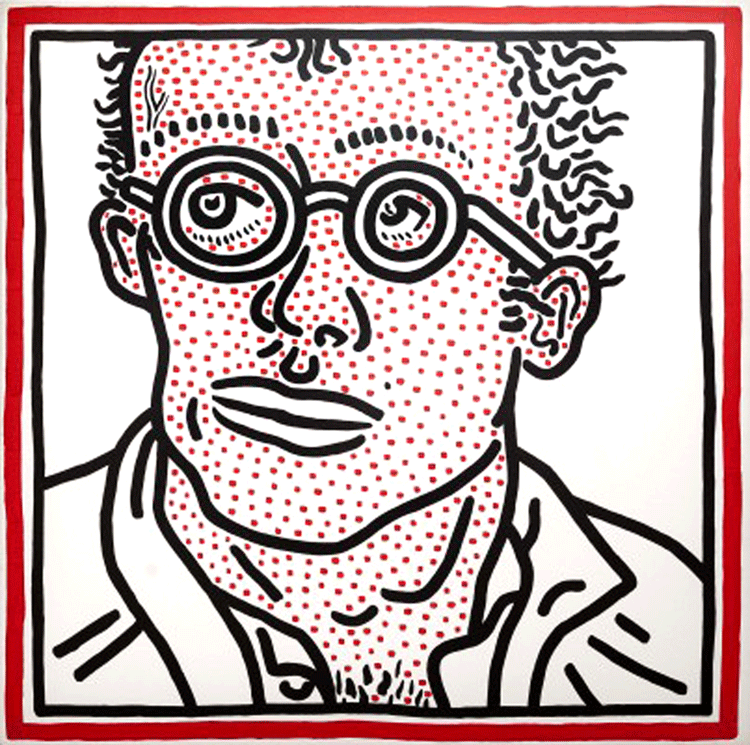(In response to my mother, who said of the pictures I posted on Facebook of the Haring exhibit at the de Young Museum: “Doesn’t look like art to me…maybe they [Haring, sic] have squandered their lives..”)
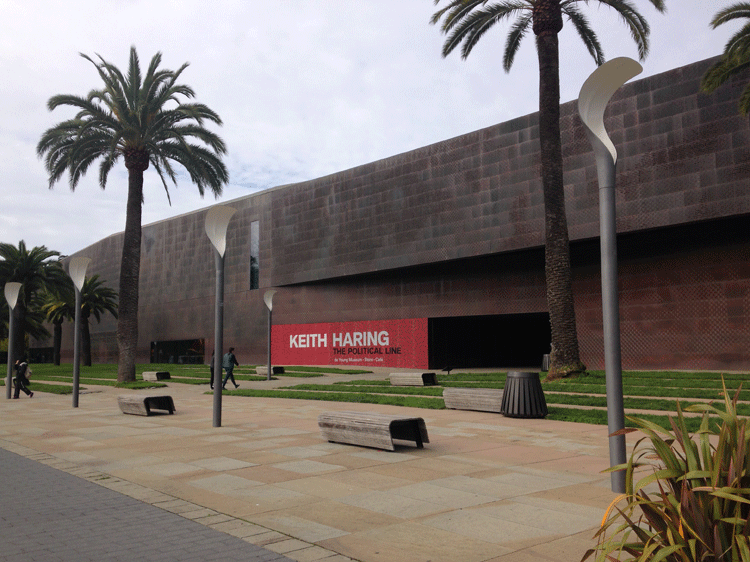
The voluminous output, the size and magisterial complexity of the pieces and the potent point of view of the artist will leave you, in a way, breathless. It will make you question whether or not you’ve squandered your life.
But that isn’t really the point.
If you look at Haring’s work through the prism of a boy born in Reading, Pennsylvania in 1958, who came of age in the 70s and lived as a gay man in the harrowing age of AIDS during a presidency that was utterly silent on the matter and which would have gladly, or at least indifferently, looked upon his death at the age of 31 as either warranted or immaterial, then his art — not classically beautiful, mind you — clearly evokes a new and difficult iconography of beauty and truth.
Capitalism, violence, sex, religion and oppression are the key themes of his work. He presents them in complex, highly structured and yet deceptively simple means. There’s often a playfulness to them: an unexpected joy in the face of relentless oppression and outright hostility. While some of us were aiming to appease the religious country club sect back in the Reagan 80’s, Haring was aiming to expose their hypocrisy.
Eventually, as time progresses (i.e., runs out for him) his canvases become more complicated and potent, more viscerally imbued with his unflinching point of view. His untitled 1985 large piece in red and black, which resembles a bacchanal of imaginary creatures in every imaginable sexual act (image at top of post), is Haring’s ‘Guernica’: it is the undeniable sign of his times.
In contrast, his lovingly troubled pink triangle (the pink triangle was the queer equivalent of the Judaic yellow star in Nazi Germany) evokes the fateful notions of see no evil, hear no evil, speak no evil. Or in Clintonian terms: don’t ask, don’t tell. Or, in the cadence of Haring’s time, silence = death.
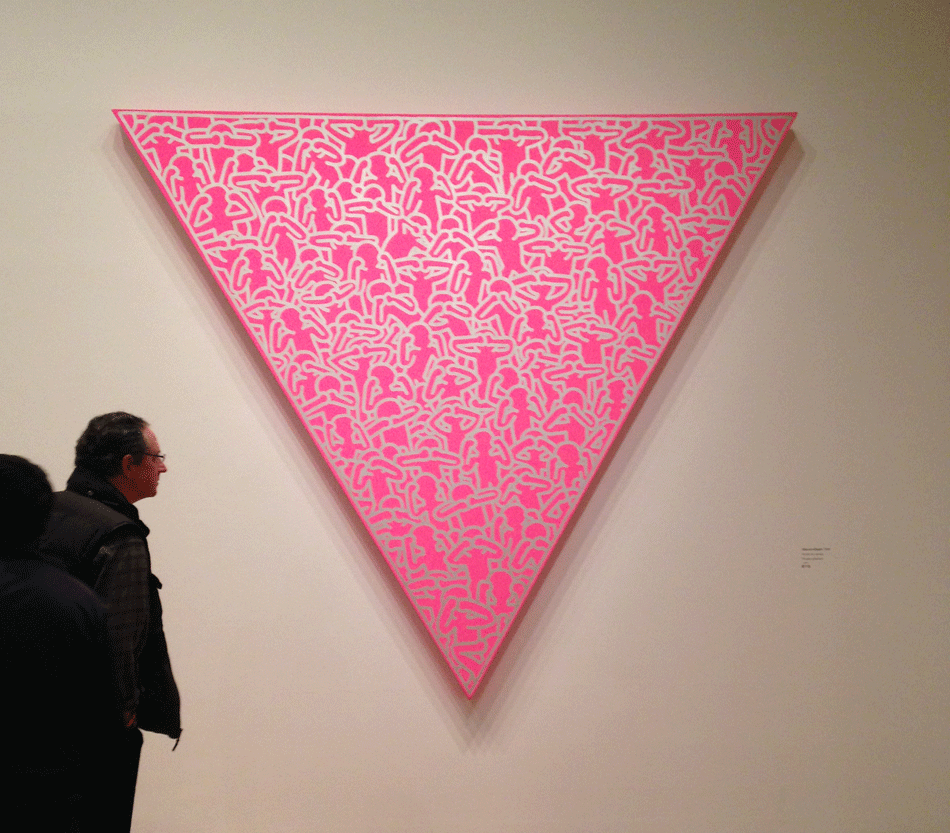
An artist doesn’t choose his or her voice. S/he chooses to accept it or not. It’s sort of like being gay: you can embrace what you’ve been given and exult in its strange beauty or you can repress it and let it eat away at you bit by bit, year after year. Haring embraced his own peculiar vocabulary of drawing to express his own particular voice, that of a queer man in a vitriolic society in which the gods of money and technology reigned supreme, and let everyone else who wasn’t white, straight, male and therefore ‘chosen’ be damned.
By choosing the expression his voice over the suppression of his voice – whether you liked his methods or had contempt for them – he far from squandered his too-brief time on the planet: he excelled in it.
